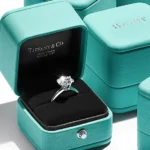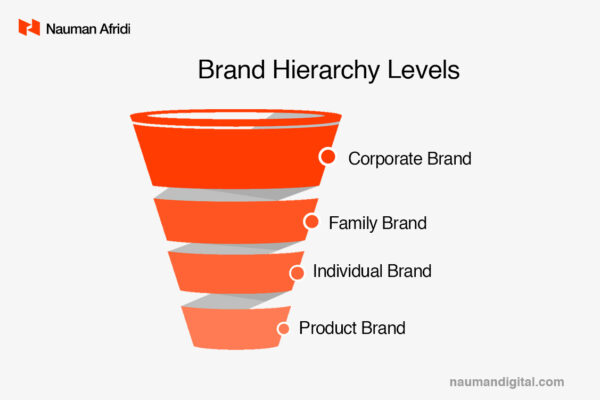Brands are always trying to persuade you to purchase their goods or services, aren’t they?
However, there are other ways to do this, and lifestyle branding just so happens to be one of them.
Lifestyle brands utilize a softer and more appealing strategy than those that use aggressive and sales-driven approaches.
Customers of successful lifestyle businesses don’t simply purchase their goods; they also buy into the philosophy and way of life that the firms are promoting.
Lifestyle branding
Lifestyle brands are aware of how monotonous most people’s lives are. Even while we cherish our families, recognize our blessings, and even love our work, we often want to improve some aspects of ourselves, such as being more daring, active, or socially aware.
Specific meals, goods, and clothing from lifestyle brands may strengthen our bonds with our ideal selves. We also think that connecting with such brands makes us more like the people we aspire to be because we think that some businesses are associated with certain ideals or aspirations.
For instance, since they base their identities on opulent and exquisite experiences, luxury lifestyle brands like Marks and Spencer persuade their clients that they may improve the quality of their lives by purchasing their items.
You must identify the kind of consumer you want to engage with in order to change your image, voice, and marketing tactics when you become a lifestyle brand and build stronger relationships with that particular person. For illustration:
- Red Bull or Monster are brands that appeal to “Extreme Sports”
- Nike and Puma brands appeal to the “Athletic” persona.
- Jeep and Harley Davidson are two brands that appeal to the “Adventurer” persona.
- Brands like Pashley or Marks and Spencer target consumers who identify as “Luxurious” or “Wealthy.”
Why Is The Lifestyle Branding Approach So Successful?
The potency of human impulses is what makes the lifestyle brand approach so powerful.
Since we are all so unique as humans, “the ideal life” implies various things to different people. We all want to live the life of our dreams.
One person’s idea of the ideal existence can include:
Being adventurous
A successful career
A large home in a quiet neighborhood
Separate holidays each year
Private school students
Playing golf on weekends
Another person’s idea of a perfect existence can include:
Traveling and living abroad as a nomad
Regular retreats for meditation
This tactic may be used in a plethora of ways since we are all so very unique. You may be really particular when portraying the picture of that life to appeal to the audience when you are clear on who the audience is and what they want from their lives.
Examples of Lifestyle Brands
We come across more instances of lifestyle brands every day as the practice gains popularity.
Even some of the most recognizable businesses in the world have started to use similar strategies to integrate their products into the ideal lifestyles of their target markets.
Nike The King of sports.
You know Nike if you’re into sports. They are without a doubt the most well-known brand in sports gear, thus it’s difficult not to. In May 2017, between the main brand and the Jordan label, they controlled 46.5% of the market for footwear alone (Nike’s original product category). Although other companies like Adidas and Under Armour have made progress recently, they still have a ways to go.
A pair of Nikes is more than simply a pair of sneakers because of their market dominance. However, more than their ubiquity contributes to Nike’s transition from a sportswear company to a lifestyle brand. The relationship with athletes is the key. Because of the renowned Michael Jordan and the value of his own brand, the Air Jordan brand is one of the most recognizable in both sports and fashion. The shoes are essentially sacred objects for many runners because of their association with American distance running star Steve Prefontaine (as well as his coach and Nike co-founder Bill Bowerman).
Nike also contributes to the feeling of being an exceptional athlete in the regular individual by just supporting them. They strongly believe that everyone who “just does it,” regardless of whether they are winning the World Series or just going for a morning jog, is an athlete. They provide everybody access to professional-level performance technologies like Dri-FIT, Flyknit, and even the original Waffle Trainers for everyone, not just athletes. With a variety of applications and platforms that enable users to monitor exercises, discuss progress with friends, and get encouragement from other users through social media, they also leverage the digital and online environment to help athletes of all types.
The Red Bull Way of Life
Red Bull is the best example of a brand that is solely lifestyle-related.
Red Bull invented a brand-new class of energy drinks and enjoyed complete creative freedom.
They want to “possess” the term “extreme,” and their approach to doing so included assimilating themselves into the way of life and eventually the culture of extreme sports.
They started organizing events and gathering media for the promotion of the sports itself in addition to regularly attending micro-niche extreme sports competitions.
Their media production facility and social media platforms that disseminate sponsored and user-generated material have evolved into a window into the way of life for extreme sports enthusiasts and professionals alike.
What kind of lifestyle do extreme athletes lead? Red Bull is a prime example.
The Patagonia Way of Life
Another company that has a close relationship with its customers is Patagonia.
Patagonia was founded in 1973 by Yvon Chouinard, who was inspired by his love of the outdoors and his enthusiasm for climbing.
The way of life that Patagonia promotes is one that values the outdoors and the spiritual connection that exists between people and the natural world.
The company has modified its operations throughout the years to have a minimal effect on the environment and to support a simple way of life that emphasizes natural appreciation and pleasure.
The Patagonia brand promotes and celebrates the enjoyment of the simplicity and beauty of our natural world via its social media platforms and website, which are packed with environmental information.
How to create Lifestyle Brand
A different strategy is needed for creating a lifestyle brand than for other types of companies.
The technique has subtle differences that are crucial. To create the link, embrace the differences and include them in your work.
Take A Lifestyle Lead
Everything about your brand should celebrate the ideal lifestyle it is based on, including its visual identity, text, message, narrative, images, beliefs, and values.
The approach involves highlighting the ideal lifestyle in as many details as possible. The targeted audience is more likely to connect with the lifestyle’s thorough portrayal and join the tribe on this common mission if it seems more concrete and tangible.
Put your tribe and way of life before your goods and services by focusing your efforts on winning them over.
Create A Community Of People With Similar Views
Everyone wants to experience a feeling of identity. Even better, we all want to be in the company of others who hold many of the same values that we do.
A sense of camaraderie is created when lifestyle businesses are able to generate an active community of individuals who are all looking in the same direction, pulling in the same direction, and singing the same tune. This enhances the sentiments, beliefs, and desires for that desired lifestyle.
Integrate Your Brand With That Lifestyle
Successful lifestyle businesses put a secondary emphasis on lifestyle rather than products and services.
What the company is delivering just becomes a means to a goal thanks to its captivating graphics, consistent messaging, and enthusiastic community.
The lifestyle is the goal, and the merchandise and services that help the target market achieve that lifestyle are the means.
The brand and its offering just serve as a stepping stone and a leading aid to the desired life via product integration into the lifestyle being portrayed or inspirational recommendations and how to accomplish them.
Get Social
Lifestyle brands are sociable by nature. Most of the time, when someone tries to adopt a specific lifestyle, they are attempting to establish their identity in front of others. Social media is the finest platform for lifestyle brands to interact with their audience. While gathering information about your target audience, will assist you in beginning to create experiences with them.
Produce excellent content
Your capacity to develop outstanding content is crucial to building a successful brand. Avoid attempting to market your services or products to your clients. Instead, look for opportunities to flaunt your identity and your position of authority in your domain.
One of the best tools and methods for advertising and marketing when it comes to lifestyle branding is photography.
The audience’s ideal lifestyle is what they fantasize about, and one of the greatest ways for a company to associate itself with that lifestyle is to offer a realistic image of it.
Images may be absorbed by humans in as little as 0.013 seconds, and they can penetrate our memory systems far more quickly than words can.
To put it another way, businesses that use striking images to represent the lifestyle their target market aspires to live have a far better chance of being recognized, recalled, and—more importantly—associated with that lifestyle.
Be Flexible, Not Pushy
The way the brand is integrated into the lives of the customer is one of the core tenets of the lifestyle branding approach.
This method is undermined by pushy sales practices that force goods and services down the audience’s throats. Since no one enjoys being marketed to, that would be in opposition to the lifestyle that is wanted.
The lifestyle brand simply makes its goods and services available to the public via social media platforms or informative and helpful email campaigns, like an old friend lending a helping hand.
If this is done well, not only won’t the audience feel compelled to purchase, but they’ll also be appreciative of the brand’s ease in assisting them in accomplishing their objectives.
Final words on lifestyle branding
Everybody wants to be their best self and live the lifestyle they’ve always wanted.
Brands that really invest the time to comprehend their target market and the ideal life they wish to lead may catch their audience’s attention by describing that life in vivid detail.
The audience is more inclined to join the tribe and accept the brand’s ideals the more regularly and successfully the company promotes this lifestyle and offers its service as a complement to attaining it.
Can you convey a clear image of their ideal lifestyle if you are developing a brand? Comment here with your opinions or viewpoints on the lifestyle branding plan.







![How To Become A Brand Strategist [Easy Guide]](https://naumandigital.com/wp-content/uploads/2023/10/pexels-andrea-piacquadio-3771098-600x400.jpg)

![How To Define Brand Attributes [Inc Examples]](https://naumandigital.com/wp-content/uploads/2023/10/pexels-pixabay-279906-600x400.jpg)